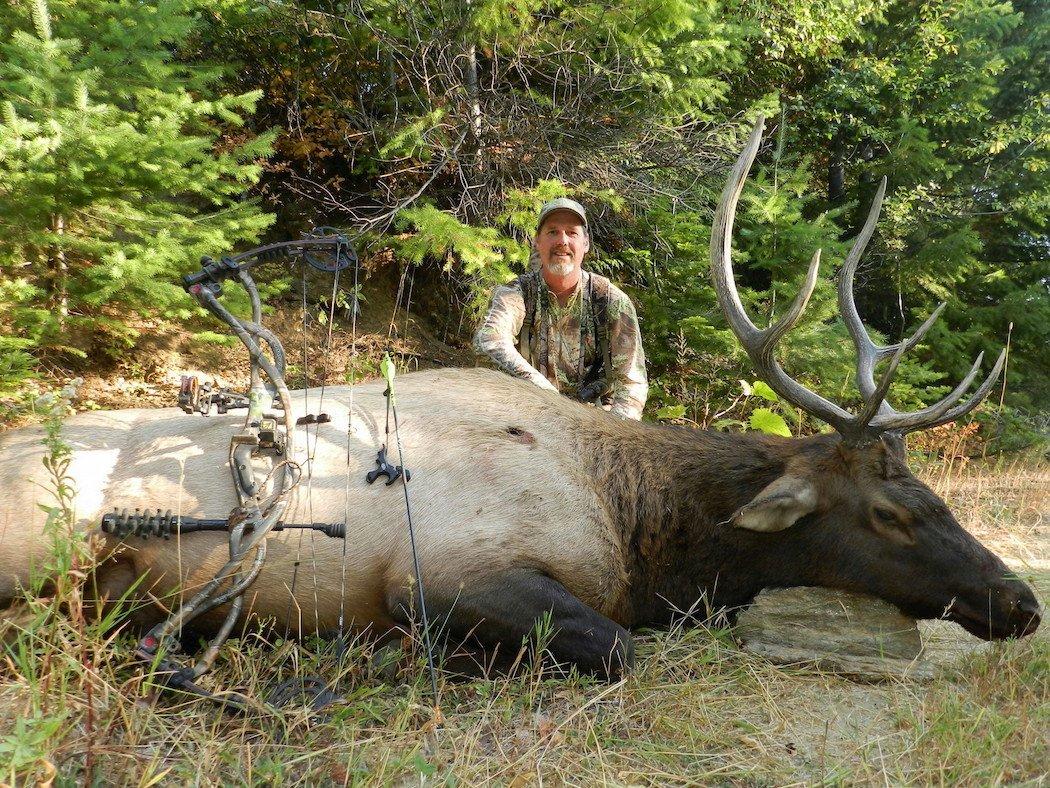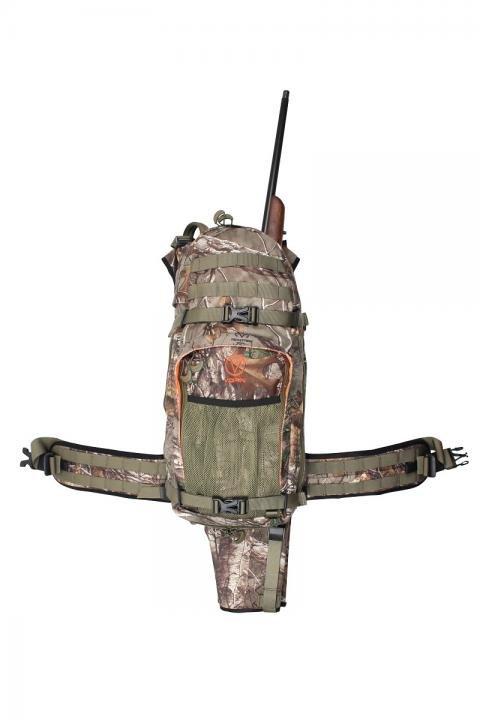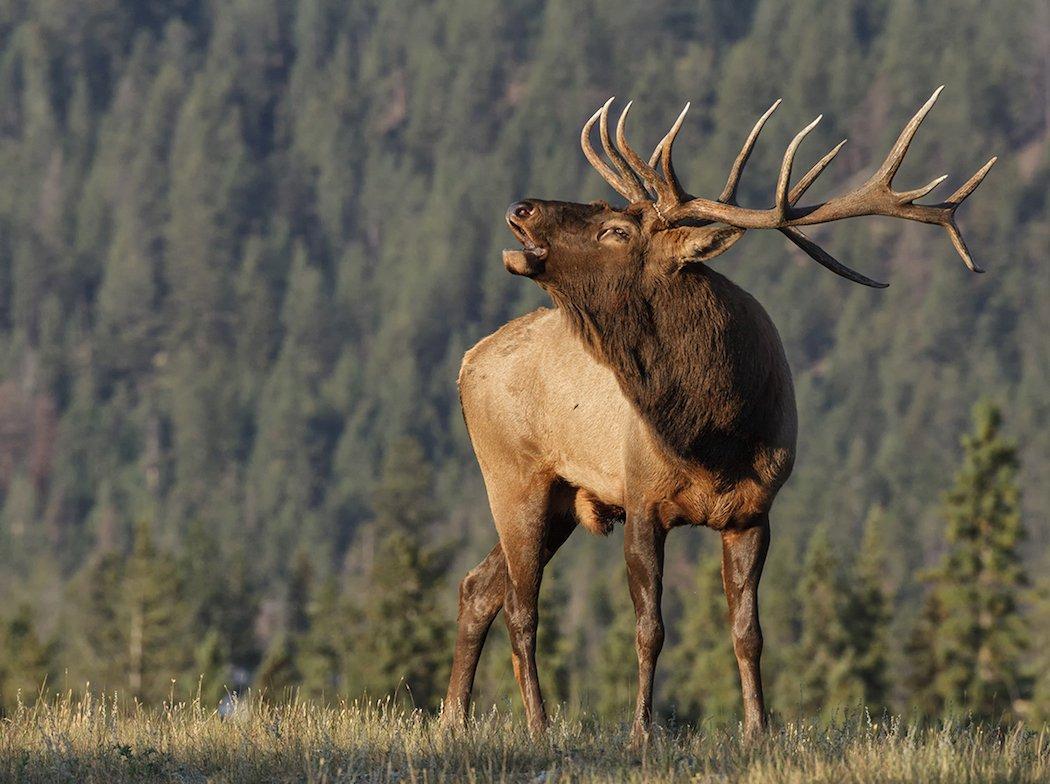Not All Elk Habitats Are Created Equal
Elk are where you find them, no matter where they reside. The elk hunter can also be faced with two entirely different habitat types in a single morning, such as dogging a bugling Southwestern bull across open mesa country one hour, dropping into impossibly-thick pinon/juniper thickets the next. In the Northwest, it's not unusual to start the day in a wide-open clear-cut, only to end the morning in jungle-like forests where visibility is reduced to stone's-throw yardages. But that is not what I have in mind here. I'm thinking more in terms of overall habitat, as Southwestern elk are no more like Rocky Mountain alpine elk as they are to Pacific Northwest rainforest or western Montana blacktimber bulls. Each requires a different outlook, mindset and overall approach to the game. Follow me as we explore those major differences and how to succeed in each.
Southwest and Prairie Wapiti
It's no surprise elk are often found in open habitats. Historically elk were animals of the open prairies, man's hunger for their delicious venison ultimately drove them into remote mountains where they're mostly found today. But these open habitats can produce the sport's largest-antlered bulls, whether looking at Montana's Missouri Breaks, New Mexico and Arizona's desert foothills or Utah and Nevada's cedar-covered mesas, just as examples. These open places also work to the illusive bull's advantage, as generations of elk hunters have been trained to think in terms of alpine habitats while pursuing elk and these places are often overlooked in favor of higher, thickly-wooded ground. In New Mexico, Arizona and Eastern Montana, I've witnessed elk — behemoth bulls — miles from the nearest trees, in pronghorn habitat few elk hunters would even guess harbored elk.

Nowhere is optics more important to elk-hunting success than they are in open habitats. Even when bulls are bugling strong, each day starts by mounting a high vantage and putting glass to work (maybe a 10x42mm) with the first hint of daybreak. Our sight is much better than our feeble hearing, especially when top-quality binoculars are involved. In the right settings the elk hunter is able to cover literally hundreds of square miles of countryside in hours. Elk are large and show well in the slanting rays of daybreak, a scattered herd often visible at 5 to 10 miles. After a couple mornings, you may see a pattern developing, allowing you to investigate closer and get into the spot-and-stalk or dogging game. By dogging, I mean allowing elk talk to guide you, playing the wind, attempting to close the gap on a moving herd, ultimately slipping in to get a shot at the herd bull. This is often your only chance at these monarchs, as they seldom respond to calls, having nothing to gain and everything to lose by leaving their cows behind to pick a fight.
As the morning progresses, elk in even open country seek refuge in timbered draws, off the edges of mesas or at least patches or fingers of encroaching cover. Your dogging efforts then turn from a visual enterprise into an auditory one. If the bull you are after is talking on his own, even if only sporadically, let him. Calling to him will only put him on alert and cause him to keep an eye peeled. Only when elk fall silent, leaving you guessing as to what trajectory a stalk might take, should you call in an attempt to get elk talking again. This call should be something subtle and innocuous, a quiet cow chirp, or the non-threatening, squealing bugle of a young bull that keeps elk calm and unsuspecting.
Timberline Herds
High-elevation, alpine elk — often located deep in the wilderness — are thought of as the sport's enduring classics, the settings gracing sporting calendars and the pages of most hunting magazines, the essence of the sport to generations of elk hunters. Up and down the Rocky Mountains proper, alpine elk, with first light mornings and just before sunset evenings, can be quite conspicuous, downright obvious even. Finding elk, in undisturbed areas at least, can be a cinch. Getting to them, on the other hand, can prove a bit more problematic. Rough-and-tumble terrain, thin air, restless talus slopes and ankle-twisting rock quickly impart a dose of reality. You might plainly observe a herd of elk a half-mile away—across a vertical canyon—but reaching them could consume half a day. The timberline hunter's most important assets are strong legs and lungs—though the best optics you can afford never hurt anything ether. When pursuing elk in Colorado, Wyoming, central Montana or eastern Idaho wilderness high country, arrive in top physical conditioning, or don't come at all. This kind of elk hunting is not for the faint hearted.

Nowhere is aggressive calling, namely those belted-out bugles with grunt and chuckle finishes, more productive than in remote wilderness areas accessed only with great effort. Those big herds of elk so easily observed include the classic dynamic of a herd bull guarding his harem, and ringed around with hovering satellite bulls. Those satellite bulls are ripe for the picking, if you're tough enough to reach them, play the wind (which can involve painful losses and gains of precious altitude) and move close enough to enter the fray.
Straight-forward spot-and-stalk ploys are likewise productive here — again, only if you are tough enough. Alpine elk often bed in the open or semi-open, in points or patches of scattered trees where they otherwise remain relatively visible. Stalking bedded animals — elk and mule deer — is often the most productive approach in these alpine habitats. Allow them to settle in for the day — normally occurring from 10 to noon — circle to accommodate the wind and take your time, moving slowly and carefully. They'll stay put awhile. You have time.
Blacktimber and Rainforest Bulls
Presenting elk-hunting's most challenging conditions, blacktimber and rainforest bulls can prove extremely frustrating — especially if they aren't talking. Blacktimber refers to overgrown conifer forests found in places like western Montana and eastern Idaho's Bitterroot Mountains that almost finished Lewis & Clark's Corps of Discovery Expedition, just as an example. This is country in need of forest fire, a pick-up-sticks of live, dead and half-dead timber of arm to torso dimensions. The Pacific Northwest's Roosevelt elk temperate rainforests are a world of their own; tangled second growth firs and cedar, devil's club, ferns, myrtle and alder, and infuriating blackberry brambles. These are habitats where visibility is severely limited, the monotony interrupted only by the occasional logging clear-cut — which will soon turn into its own kind of hell of thronged second growth and tangle-foot logging debris.

There is essentially only one way to approach such habitat, and that is tedious still-hunting. The hunter chooses an established game trail or defunct logging trail allowing slightly quieter movement and slips along slowly and quietly, pausing often to peer ahead with compact binoculars (8x32mm offers an ideal balance between tote-ability and cutting dark timber gloom), listening intently (cracking branches, clicking hooves or elk talk) and seeking fresh sign (steaming droppings are the best indicator you're on the right track).
When you discover an area where it's apparent elk are present, sit tight, nock an arrow and pull out the calls. I like to start with social cow calls, offering an occasional chirp—like once every 4 or 5 minutes, no more—waiting and listening intently. Calling more often does not sound natural and will arouse suspicions. If you get a bull talking, and he begins to move your way, stick with the cow calls. Don't risk putting him off with a bugle, as he might prove a lover and not a fighter. If after 20 or 30 minutes you get no response, or no elk appears, give the bugle a try, producing a non-threatening, grunt-free squeal. Always be ready for action any time you produce a call, as some deep-timber bulls slip in silently, especially in wolf country. Remember, too, calls don't carry well in thronged timber, so a retort to your calling can easily go unnoticed. Many seem to believe Roosevelt elk, in particular, do not call or respond to calls, but the most successful Roosey hunters I know find success through calling. My first Roosevelt came via calling.
The traveling elk hunter must develop a flexible attitude if they are to regularly punch bull tags across their entire range. You might have the Southwest wired, but then find yourself floundering in Northwest Roosevelt country; as I once did in coastal Oregon after 23 years of successfully guiding New Mexico and Arizona elk hunters. Let the habitat type dictate your approach and you'll return home with more meat and bigger antlers every time.
Editor's note: This was originally published August 28, 2017.
Click here for more big game hunting articles and videos.
Check us out on Facebook.







